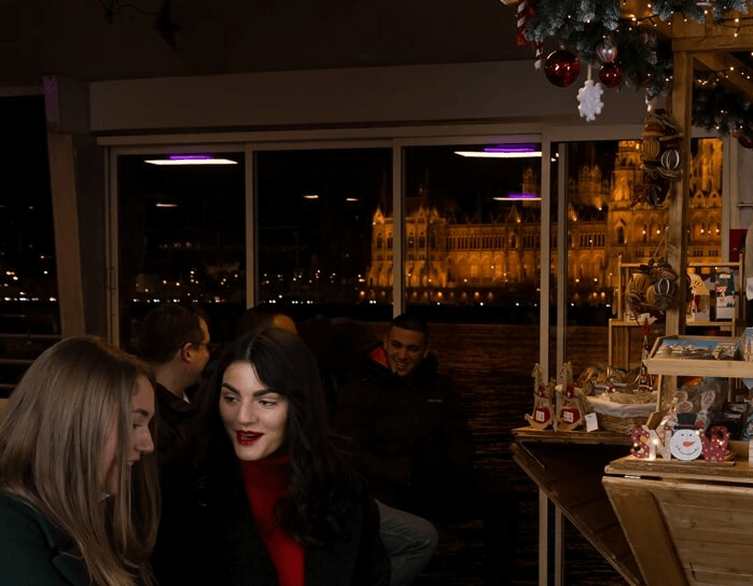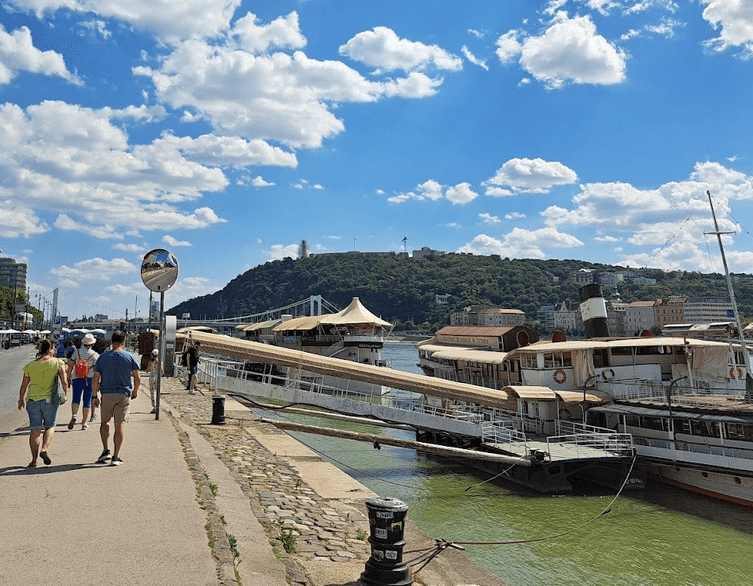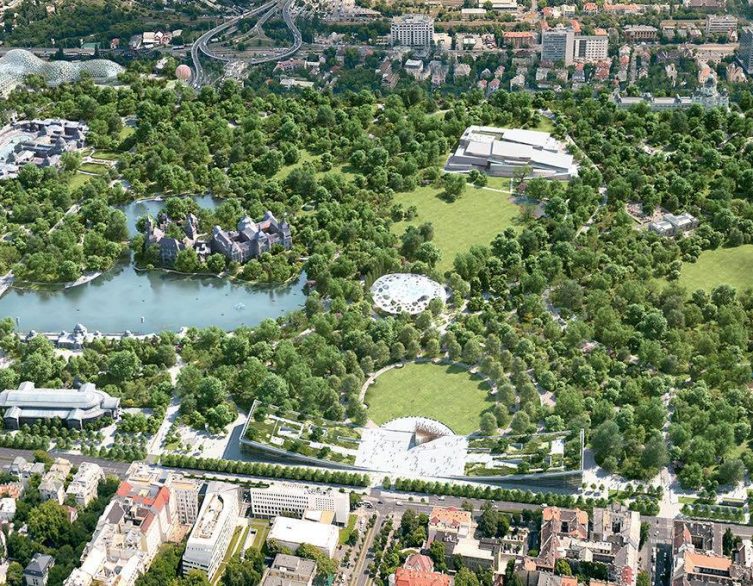Budapest’s Hidden Secret: The Mysterious Grave You’ve Never Heard Of

When you think of Budapest’s must-see attractions, your mind probably jumps to the stunning Parliament building, the thermal baths, or perhaps the majestic Danube River. But what if we told you that one of the city’s most intriguing secrets lies hidden in plain sight within the beautiful City Park? Tucked away in the green heart of Budapest is a mysterious grave that has puzzled visitors and locals alike for over two centuries.
The Enigmatic “Fuit” Grave in City Park
Deep within the lush greenery of Városliget, Budapest’s beloved City Park, stands a simple yet haunting monument that most tourists walk past without a second glance. Located between the “Reading Women” statue and the Transport Museum, this solitary grave bears only one word etched in Latin: “Fuit” – meaning “he was” or “he existed.” This single word holds the key to one of Budapest’s most fascinating historical mysteries.
The grave belongs to Jakab Horváth, an eccentric 18th-century lawyer whose final resting place has become the stuff of local legend. But why would someone choose to be buried in a public park? What drove this unusual decision, and what secrets does this solitary grave hold?
The Man Behind the Mystery
Jakab Horváth was born in 1738 in Toporc, and his life was dedicated to the pursuit of law, philosophy, and knowledge. Far from being just another lawyer of his time, Horváth was a man of considerable means who served as the legal administrator for Prince Grassalkovich. His law office employed thirty legal clerks, indicating the scope and success of his practice.
What made Horváth truly unique was his unconventional lifestyle and deep philosophical convictions. He lived as an ascetic, rejecting earthly pleasures and never marrying. Instead, he spent his time immersed in his extensive library, pursuing knowledge and intellectual growth. Despite his wealth, he showed little interest in material possessions or religious observance.
Horváth was also a man of principle who aligned himself with Jacobin ideals. He courageously took on the legal defense of victims in the politically charged Martinovics trial, demonstrating his commitment to justice even when it was dangerous to do so. When he died in 1806, his final wish was as unconventional as the man himself: he left 700 forints to the city of Pest with the specific condition that he be buried in the interior of what was then called “Ökördűlő” (Ox Pasture) and later “Battyány Forest” – the area that would eventually become City Park.
Best deals of Budapest
A Grave Built to Last
Horváth’s burial arrangements were meticulously planned and executed. The burial site was constructed by Mátyás Zitterbach, who built the brick-lined tomb, while János Okenfusz crafted the distinctive gravestone. The single word “Fuit” on his tombstone wasn’t chosen randomly – it serves as a profound meditation on mortality and the transient nature of earthly glory. In just four letters, Horváth managed to encapsulate a philosophy that speaks to anyone who pauses to consider its meaning.
Legends and Local Folklore
Over the centuries, the mysterious grave has spawned numerous legends that have taken on lives of their own. For decades, various romantic stories circulated about the tomb’s occupant. One popular tale claimed it marked the burial site of a suicide victim. Another version spoke of the grave belonging to someone who had donated part of the City Park to the city. Perhaps the most elaborate legend told of a tragic romance between a Hungarian nobleman and a beautiful countess, with the grave serving as a monument to their doomed affair, or alternatively, the final resting place of a life-weary Hungarian poet.
These stories, while captivating, are far from the truth. The reality of Jakab Horváth’s life is actually more inspiring than any fictional tale. He was a man who used his legal expertise to defend the vulnerable, devoted his entire fortune to charitable causes, and chose to spend eternity in a place where his simple message about life’s impermanence could touch the hearts of future generations.
A Monument Preserved Through Time
The grave’s survival through Budapest’s tumultuous history is remarkable in itself. The first restoration took place in 1928, when a carved stone frame was added in front of the gravestone. As the city expanded around it, the once-remote marshy area transformed into the beloved City Park we know today.
The 1960s brought another renovation, but for decades, even the park’s caretakers didn’t realize that beneath the gravestone lay an actual burial vault. This hidden chamber was only discovered in 1955 during routine shrub planting.
The Great Archaeological Discovery of 1995
In 1995, the Herminamező Citizens’ Circle, led by master stonemason Sándor Antal, decided to undertake a comprehensive restoration of the monument. They were determined not only to restore the gravestone but also to properly relocate it above the actual burial vault.
This ambitious project required extensive research led by city historian Péter Buza, as previous descriptions had failed to pinpoint the exact location of the tomb. Using modern technical equipment, the team finally located the burial site on August 30, 1995.
What they discovered was extraordinary: Horváth’s remains were found in a double coffin, still dressed in period clothing from over 180 years earlier. The discovery provided a remarkable glimpse into 19th-century burial practices and confirmed the historical accounts of this unusual man’s final wishes.
A Modern Memorial with Ancient Roots
Following the archaeological discovery, the burial site was carefully sealed with reinforced concrete, and a new gravestone was carved to match the original design. The site was enclosed with an elegant wrought-iron fence, creating a dignified memorial that honors both the man and his unique story.
Since 1995, the grave has become part of an annual tradition. Every Easter Sunday, the City Park season officially opens with a wreath-laying ceremony at Horváth’s grave, connecting his memory to the renewal and hope that spring brings to Budapest.
Why Every Budapest Visitor Should Seek Out This Hidden Gem
Discovering the Fuit grave offers visitors a completely different perspective on Budapest’s rich history. While the city’s grand monuments tell stories of kings and empires, this humble grave speaks to something more personal and universal – the human desire to leave a meaningful mark on the world.
For history enthusiasts, the grave provides a tangible connection to 18th-century Budapest and the intellectual climate of the time. Horváth’s story illuminates the role of progressive thinkers and philanthropists in shaping the city’s character. His decision to defend political prisoners and dedicate his wealth to charity reflects the values that many Budapestians still hold dear today.
But you don’t need to be a history buff to appreciate this hidden treasure. The grave’s location in the peaceful City Park makes it an ideal stop during a leisurely stroll through one of Budapest’s most beautiful green spaces. It’s a place that invites contemplation and offers a moment of quiet reflection away from the bustling tourist crowds.
Finding Your Way to Budapest’s Best-Kept Secret
The Fuit grave is easily located within Városliget, positioned between the “Reading Women” statue and the Transport Museum. While visiting the park’s more famous attractions like the Széchenyi Thermal Baths, Heroes’ Square, or the Museum of Fine Arts, take a detour to this quieter section of the park. The grave sits modestly among the trees, surrounded by its protective wrought-iron fence, waiting for curious visitors to discover its story.
The beauty of this hidden gem lies not just in its mystery, but in its accessibility. Unlike many of Budapest’s attractions that require entrance fees or specific opening hours, the Fuit grave is always there, patient and eternal, ready to share its simple yet profound message with anyone who takes the time to find it.
A Reflection on Life’s Deeper Meanings
In our age of social media and constant connectivity, there’s something deeply moving about encountering a monument that speaks to timeless human experiences. Jakab Horváth’s grave reminds us that true legacy isn’t measured in fame or fortune, but in the positive impact we have on others and the principles we choose to uphold.
The word “Fuit” – “he was” – might seem melancholic at first glance, but it’s actually a celebration of existence itself. It acknowledges that while our time on earth is limited, the fact that we existed, that we loved, learned, and contributed to the world around us, has meaning that transcends our physical presence.
For visitors to Budapest, discovering this hidden grave offers more than just another photo opportunity or historical footnote. It provides a moment of connection with the city’s deeper soul, a reminder that beneath the surface of any great city lie countless individual stories of people who chose to live with purpose and meaning.
So the next time you find yourself wandering through City Park, take a moment to seek out this remarkable hidden treasure. Let Jakab Horváth’s simple yet powerful message remind you that while we are all temporary visitors in this world, the impact we choose to make can echo through the centuries, touching the hearts of strangers we’ll never meet but whose lives we can still inspire.
Related news
Related attractions





















